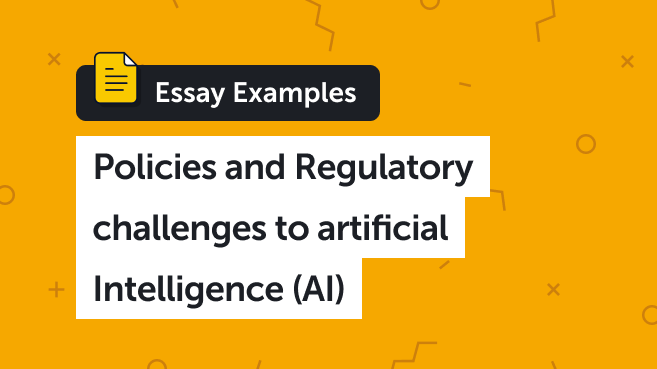Policies and Regulatory Challenges to Artificial Intelligence


Artificial Intelligence (AI), with its vast promise and transformative capabilities, stands as one of the most groundbreaking technological advancements of our age. Yet, beneath its dazzling surface lies a labyrinth of regulatory challenges, demanding both immediate attention and nuanced understanding.
At the heart of the regulatory dilemma is the foundational challenge: What precisely is AI? The nebulous nature of its definition throws a wrench into regulatory efforts. Without a universally accepted characterization of AI, the roadmap to its governance remains hazy. The sheer dynamism of the AI domain, with ever-evolving applications and capabilities, further compounds this challenge, making it an uphill task for policymakers to remain in lockstep with technology’s frenetic pace.
Bias within AI systems presents another intricate challenge. Machines learn from data; however, if that data carries inherent prejudices, the AI tools, in turn, mirror those biases. Such biases aren’t just technological hiccups; they can perpetrate and amplify real-world prejudices. For instance, when AI is deployed in recruitment, a data set that underrepresents certain demographics could inadvertently result in AI systems favoring one group over another. The repercussions of such systemic biases, especially in critical sectors like healthcare or law enforcement, could be profound and deeply unjust.
Unforeseen consequences of AI’s actions further complicate the regulatory landscape. As we venture deeper into the AI realm, predicting the behavior of increasingly intricate systems becomes arduous. An unforeseen misstep, like an AI medical tool misdiagnosing a rare ailment due to gaps in its training data, can have grave implications, underscoring the necessity of exhaustive and robust system training.
Amidst this backdrop of challenges, global efforts to harness AI responsibly are budding. Notably, the European Union made significant strides in 2018 by unveiling a comprehensive guideline aimed at fostering ethical AI innovations. Emphasizing pillars like transparency, accountability, and equitable treatment, the EU’s endeavor serves as a beacon for other regions. Moreover, nations like Singapore have been proactive, instituting dedicated advisory bodies to oversee AI’s ethical deployment.
In synthesis, charting the regulatory path for AI is akin to navigating a complex maze. While the ambiguous definition of AI poses foundational challenges, issues like inherent biases and unpredictable outcomes add layers of intricacy. But, even in this intricate milieu, global steps toward responsible AI governance, such as the EU’s ethical guidelines, inspire optimism. Policymakers worldwide must engage in collaborative, informed dialogues to ensure AI’s promise is realized while safeguarding societal values.
Sources
Candelon, F. (2021, August 30). AI regulation is coming. Harvard Business Review. https://hbr.org/2021/09/ai-regulation-is-coming
Misra, S. K., Das, S., Gupta, S., & Sharma, S. K. (2020). Public policy and regulatory challenges of artificial intelligence (AI). In IFIP advances in information and communication technology (pp. 100–111). https://doi.org/10.1007/978-3-030-64849-7_10
The three challenges of AI regulation | Brookings. (2023, June 29). Brookings. https://www.brookings.edu/articles/the-three-challenges-of-ai-regulation/